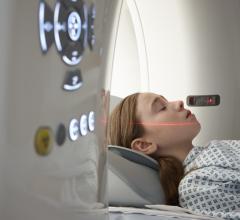
April 18, 2017 — Using 3-D models of a patient’s foot, investigators at Cedars-Sinai have found that the three leading procedures for treating heel deformities do not adequately correct the debilitating problem.
Investigators used 18 identical 3-D prints of a single patient’s heel to evaluate the most common techniques for treating Charcot-Marie-Tooth disease (CMT), a genetic neuromuscular disease that kills the long nerves in the hands and feet. The disease, named after three physicians who first identified it in 1886, affects 2.8 million people worldwide.
The Cedars-Sinai investigators focused on the deformity of the heel bone, which is frequently twisted inward in patients with Charcot-Marie-Tooth, making it difficult to walk without assistance. The researchers used a CAT scan of a patient’s heel to create the 3-D prints, and then used the models to compare correction methods from three different operations.
The research findings, presented during this year’s American Academy of Orthopaedic Surgeons annual meeting March 14-18 in San Diego, found that none of the techniques provided adequate correction of the deformity.
“Ultimately our findings offer hope for better techniques to help patients with Charcot-Marie-Tooth disease live a better quality of life,” said Glenn B. Pfeffer, M.D., lead author of the study and director of the Foot and Ankle Surgery Program at Cedars-Sinai.
The study was funded by the Charcot-Marie-Tooth Association (CMTA), an organization focused solely on promoting the education, management and treatment of patients with CMT disorders.
The abstract for the study was one of six selected from more than 900 for the “Game Changers” session at this year’s AAOS annual meeting. The designation goes to techniques most likely to change the practice in the next three years.
Cedars-Sinai investigators who collaborated on the study included Max P. Michalski, M.D., Tina Basak, M.D., and Joseph Giaconi, M.D.
“This is one of the first times 3-D prints have been used in orthopedic research and we’re thankful for the support of CMTA to use this new technology to help improve patient care,” Pfeffer said.
Pfeffer, who is also co-director of the Charcot-Marie-Tooth Center of Excellence at Cedars-Sinai, said he and his investigative team will use 3-D prints to do more research comparing additional procedures.
For more information: www.cedars-sinai.edu


 July 25, 2024
July 25, 2024 








